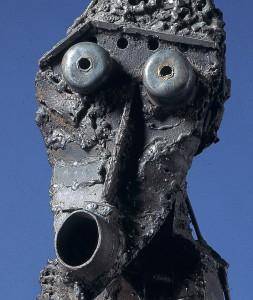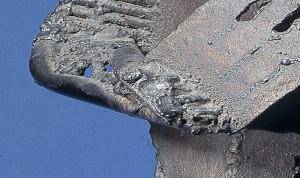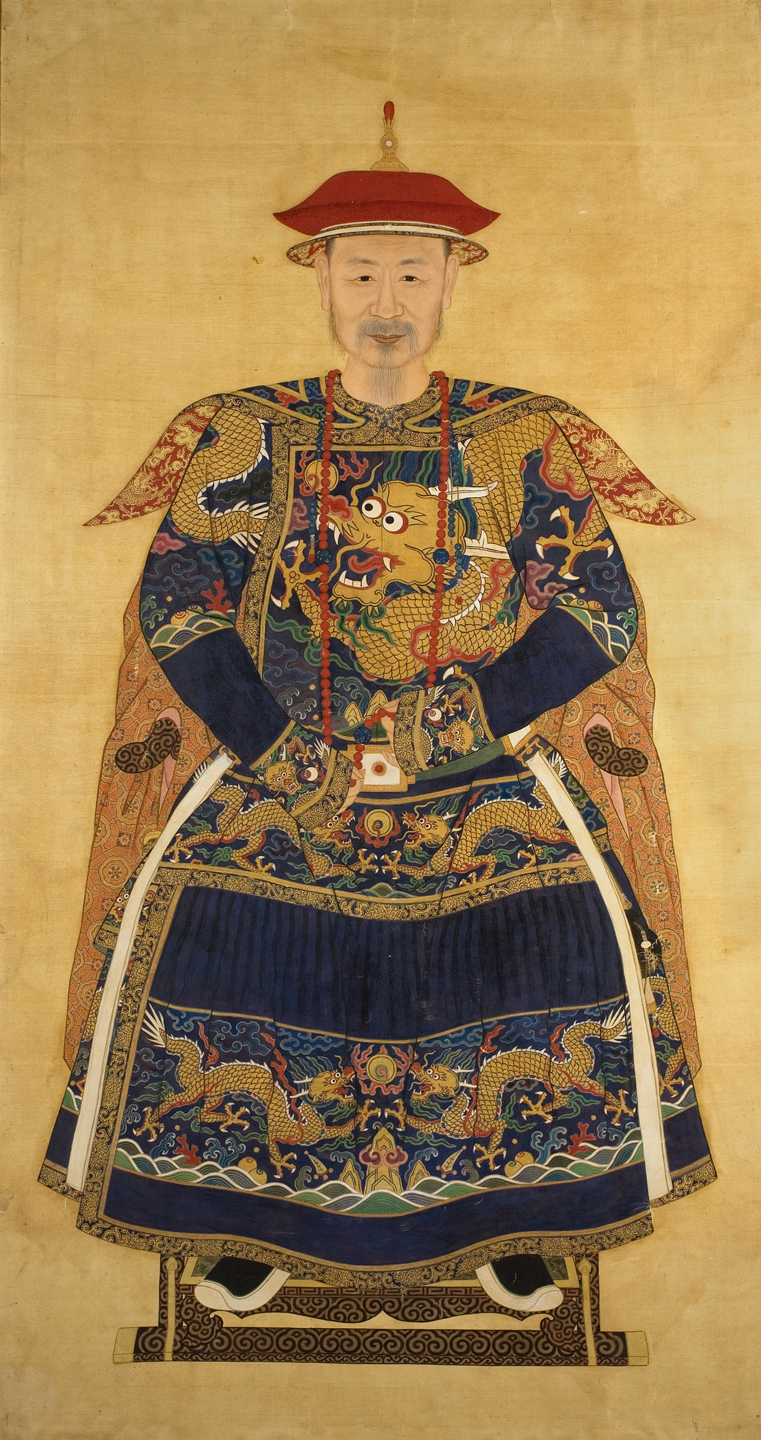Students will examine the artistic characteristics of the sculpture Spiritual Messenger, learn about the biogeographical journey of the artist, and write a creative short story that incorporates the sculpture.
Students will be able to:
- examine the artistic characteristics of the sculpture Spiritual Messenger;
- locate Uganda, Germany, France, and the United States of America on a map of the world; and
- write a creative short story that incorporates the sculpture Spiritual Messenger in an engaging manner.
Lesson
- Warm-up: Display Spiritual Messenger and invite students to look carefully and share what they observe. What do they notice? What kinds of materials were used to make the sculpture? Where do they think these materials might have come from? What does the sculpture remind them of? How would they describe the expression on the sculpture’s face? What other adjectives might they use to describe the sculpture?
- Share with students that the sculpture was created by Francis Nnaggenda in the 1970s. Nnaggenda was born and raised in central Uganda. After being exiled from Uganda under the dictator Idi Amin, Nnaggenda received his formal artistic education in Germany and France. Nnaggenda studied, taught, and worked in the United States, Europe, and other parts of Africa before returning to Uganda in 1978 at the end of Amin’s dictatorship. Have the students locate Uganda, Germany, France, and the United States of America on a world map.
- Talk about the information found in the About the Art section with the students so they are more familiar with Francis Nnnaggenda and his background and perspective as an artist. Discuss how he used to create art as a young child, his passion for using found objects, and his interest in exploring the “inner life of things.”
- Have students examine Spiritual Messenger again and explore the sculpture’s salient features. What stands out about this sculpture? How would you describe its expression? What might the Spiritual Messenger be thinking about?
- Invite the students to write a creative short story that incorporates the sculpture. Perhaps the Spiritual Messenger comes to life in the story, or maybe other characters from the story walk by it and engage in an interesting conversation sparked by the sculpture. You may want to encourage students to experiment with a creative writing genre that they haven’t explored as much, such as mystery, romance, or adventure.
- When the students have finished, invite volunteers to share their written pieces out loud and display their work in the classroom.
Materials
- Lined paper and a pen or pencil for each student
- Map of the world, visible to all students in the classroom
- Copies of About the Art section on Spiritual Messenger (included with the lesson plan) or student access to this part of Creativity Resource online
- One color copy of the sculpture for every four students, or the ability to project the image onto a wall or screen
Standards
- Social Studies
- History
- Geography
- Understand the concept that the power of ideas is significant throughout history
- Become familiar with Western Hemisphere historical eras, groups, individuals and themes
- Become familiar with Eastern Hemisphere historical eras, groups, individuals and themes
- Analyze the concepts of continuity and change and effect
- Analyze the concept of complexity, unity and diversity
- Become familiar with United States historical eras, groups, individuals and themes
- Become familiar with people in the world who are interconnected by geography
- Become familiar with World geography
- Understand geographic variables and how they affect people
- Visual Arts
- Observe and Learn to Comprehend
- Relate and Connect to Transfer
- Envision and Critique to Reflect
- Language Arts
- Oral Expression and Listening
- Research and Reasoning
- Writing and Composition
- Reading for All Purposes
- Critical Thinking & Reasoning
- Information Literacy
- Invention
- Self-Direction

Spiritual Messenger
Denver Art Museum Collection
Gift of Robert and Mary Udall, 2001.644
Photograph © Denver Art Museum 2009. All Rights Reserved.
Francis Nnaggenda was born in 1936 and raised in central Uganda. Exiled from Uganda under the dictator Idi Amin, Nnaggenda received his formal artistic education in Germany and France beginning in the 1960s. He studied, taught, and worked in the US, Europe, and other parts of Africa before returning to Uganda in 1978 at the end of Amin's dictatorship. Nnaggenda has a variety of artistic talents-he is a sculptor, painter, and poet. He combines techniques he's learned around the world with traditions from Africa. "People tell me my work looks like Picasso, but they have it wrong. It is Picasso who looks like me, like Africa," he says. When asked in an interview when he knew he wanted to become an artist, Nnaggenda spoke of his childhood and his family. His mother and grandmother would tell him stories and sing to him, and he would create images after hearing those stories. "All children play with anything available," said Nnaggenda. "From the soft clay pushed up and out of the tops of anthills, I modeled. Flowers when smeared on certain surfaces left colours, but it was in primary school that I first came across pen, pencil, and paper. Drawing was taught and I took to decorating the pages I worked on."
Nnaggenda often uses recycled materials to create artworks; for this sculpture he used recycled car parts. He looks for materials in the world around him, taking objects he finds and transforming them into something new. His passion for found objects may reflect his interest in exploring “the inner life of things.” In reference to the human form he says, “I find myself closer to the human beings because they influence me more than anything else. I am a human being expressing human experiences. But again my interpretation of human beings is inseparable from their surroundings. My figures and forms are not mere imitations of nature. I am more interested in the inner life of things.” Nnaggenda illustrates this idea in one of his poems:
The dead are not under the earth
They are in the tree that rustles
They are in the woods that groan
They are in the water that runs…
Those who are dead are not gone
They are in the child wailing and in the fire that flames…
When my ancestors talk about the Creator, they say:
He is with us…We sleep with him.
We hunt with him…We dance with him.
Details

Human Figure
Nnaggenda’s sculpture is of an abstract standing human figure with bulging eyes and mouth open in the shape of an “O.” Its right arm folds in front, and its hand stretches towards its face.

Metal
Nnaggenda welded recycled chunks of metal and old car parts to create a new form. In his artwork, he incorporates found objects, hints of paint, and jagged textures. Nnaggenda does not always build his sculptures out of metal. He also uses wood, stone, bronze, and other media.
Funding for object education resources provided by a grant from the Morgridge Family Foundation. Additional funding provided by the William Randolph Hearst Endowment for Education Programs, and Xcel Energy Foundation. We thank our colleagues at the University of Denver Morgridge College of Education.
The images on this page are intended for classroom use only and may not be reproduced for other reasons without the permission of the Denver Art Museum. This object may not currently be on display at the museum.







